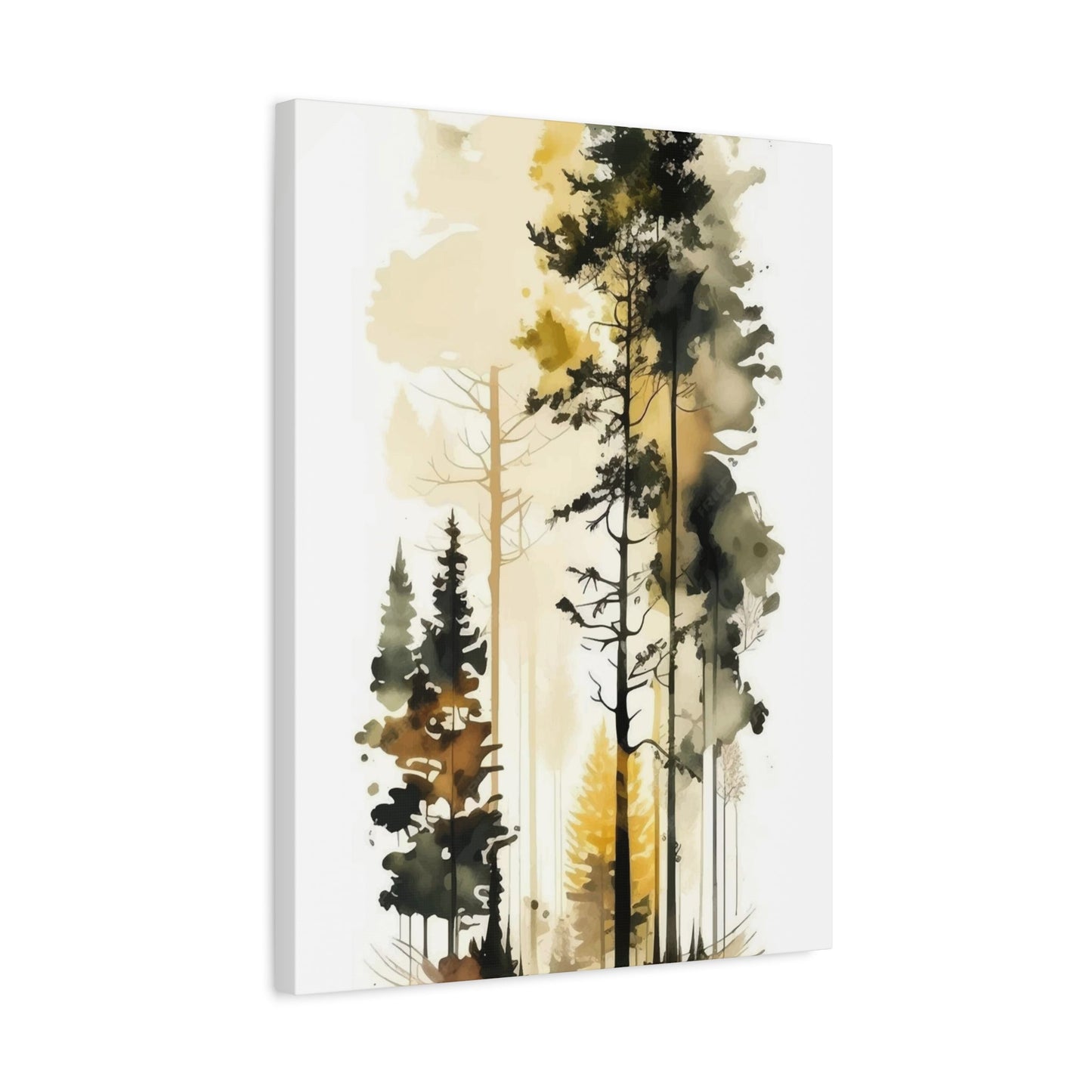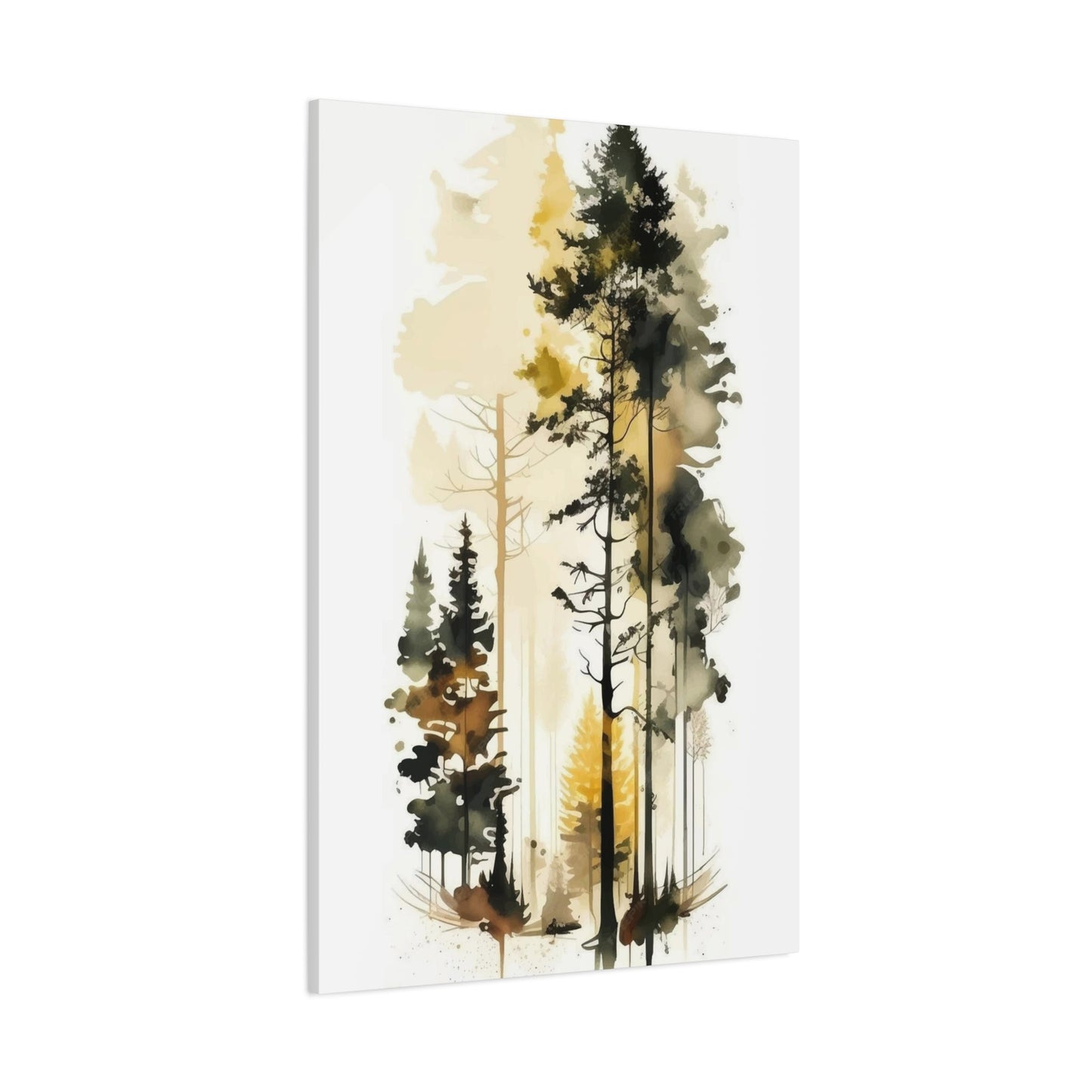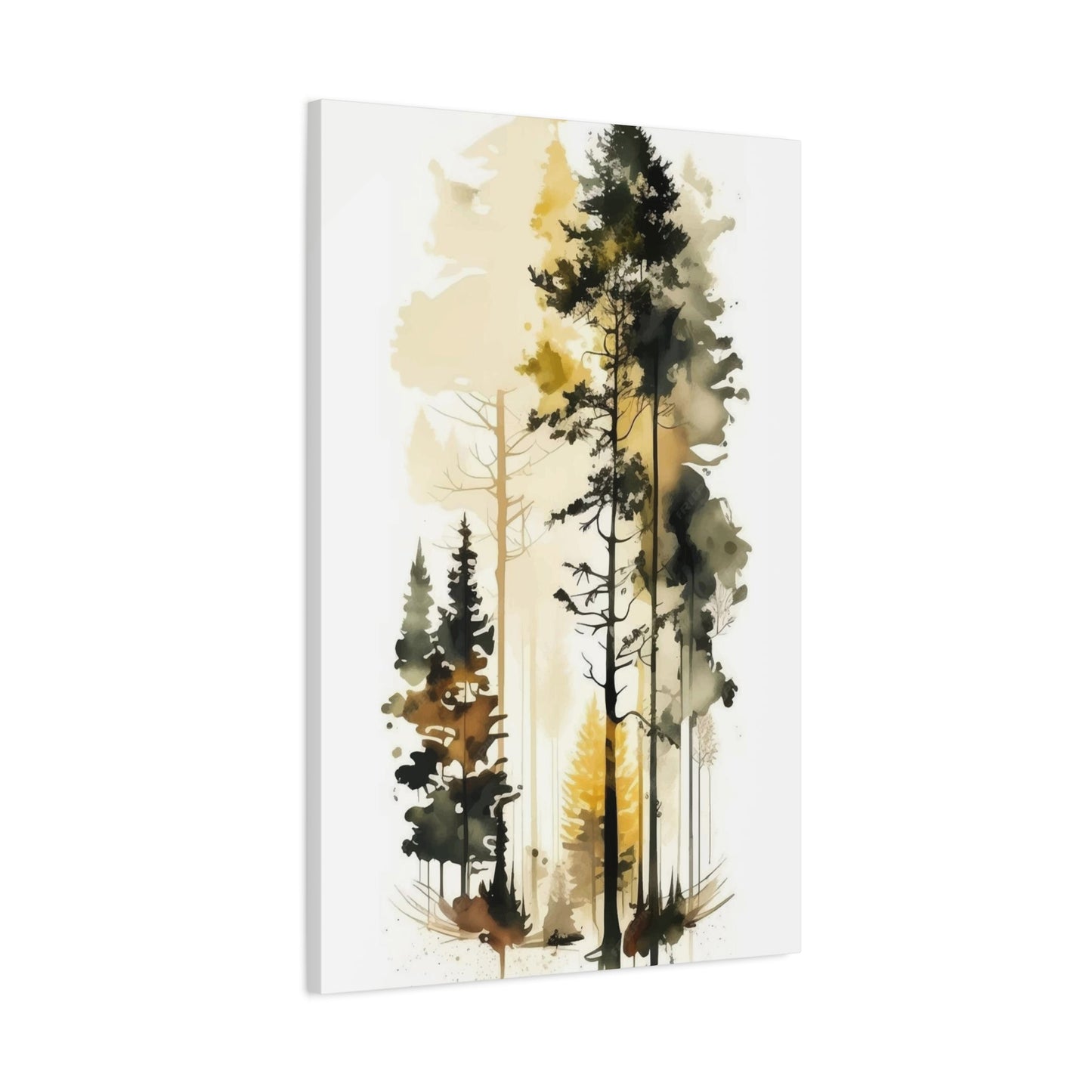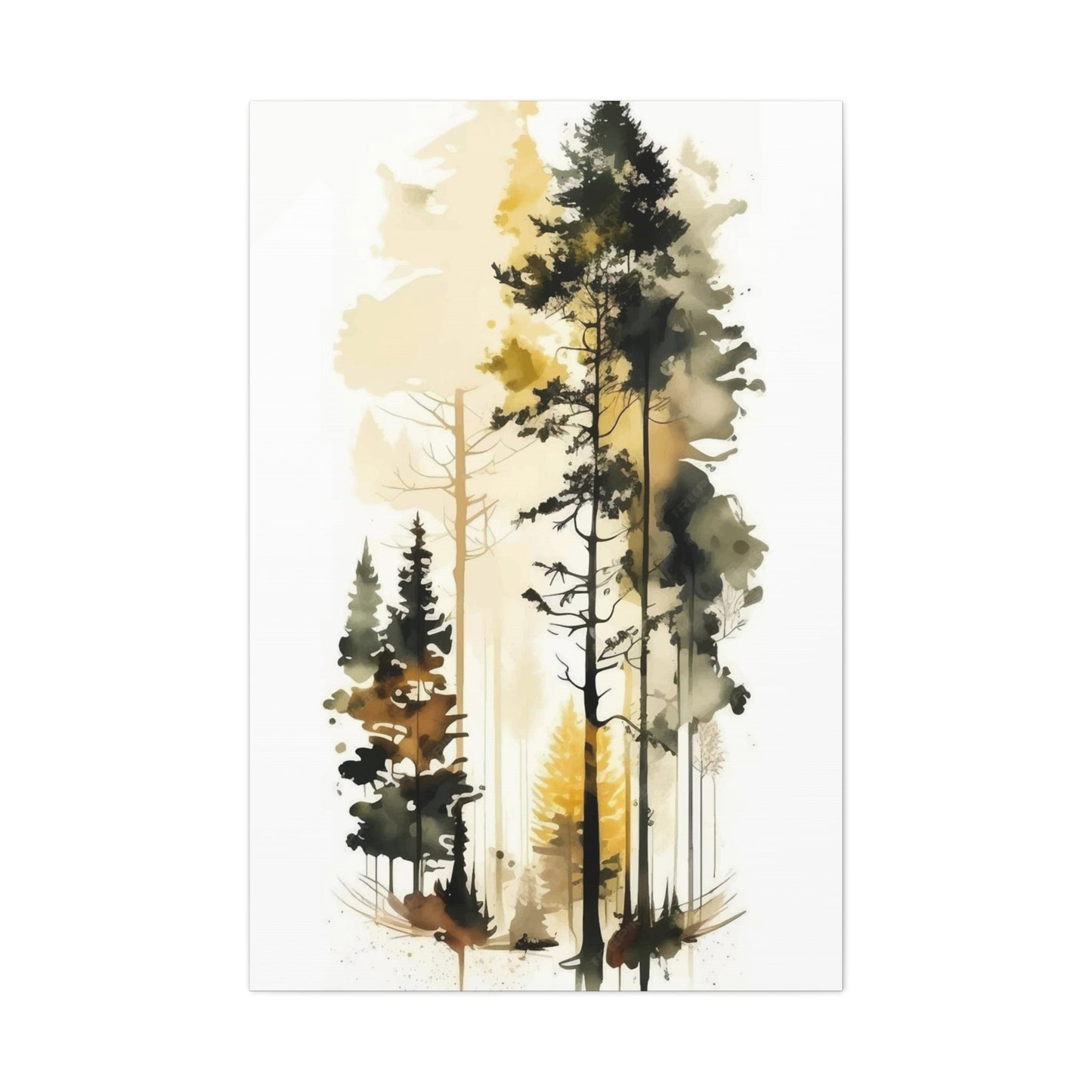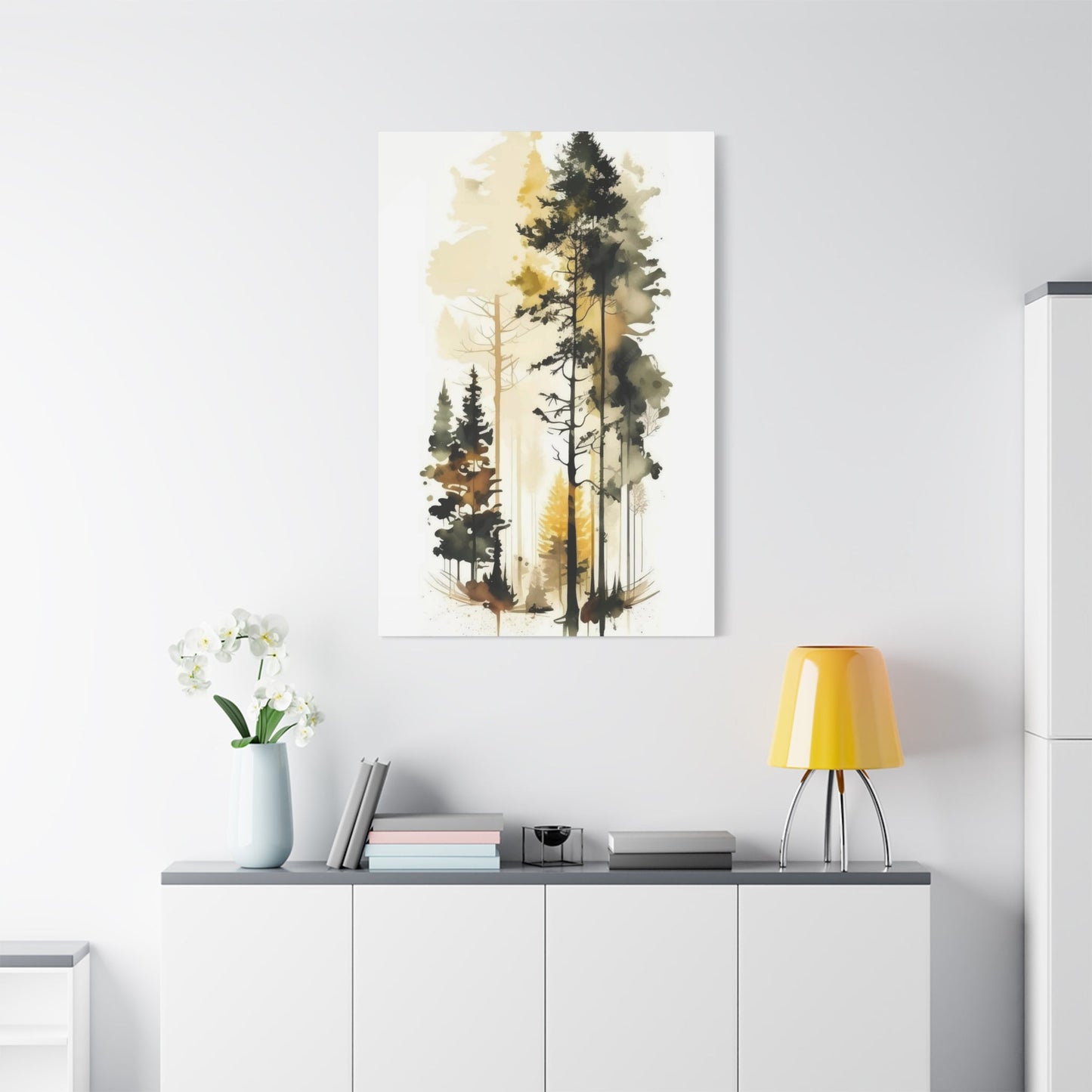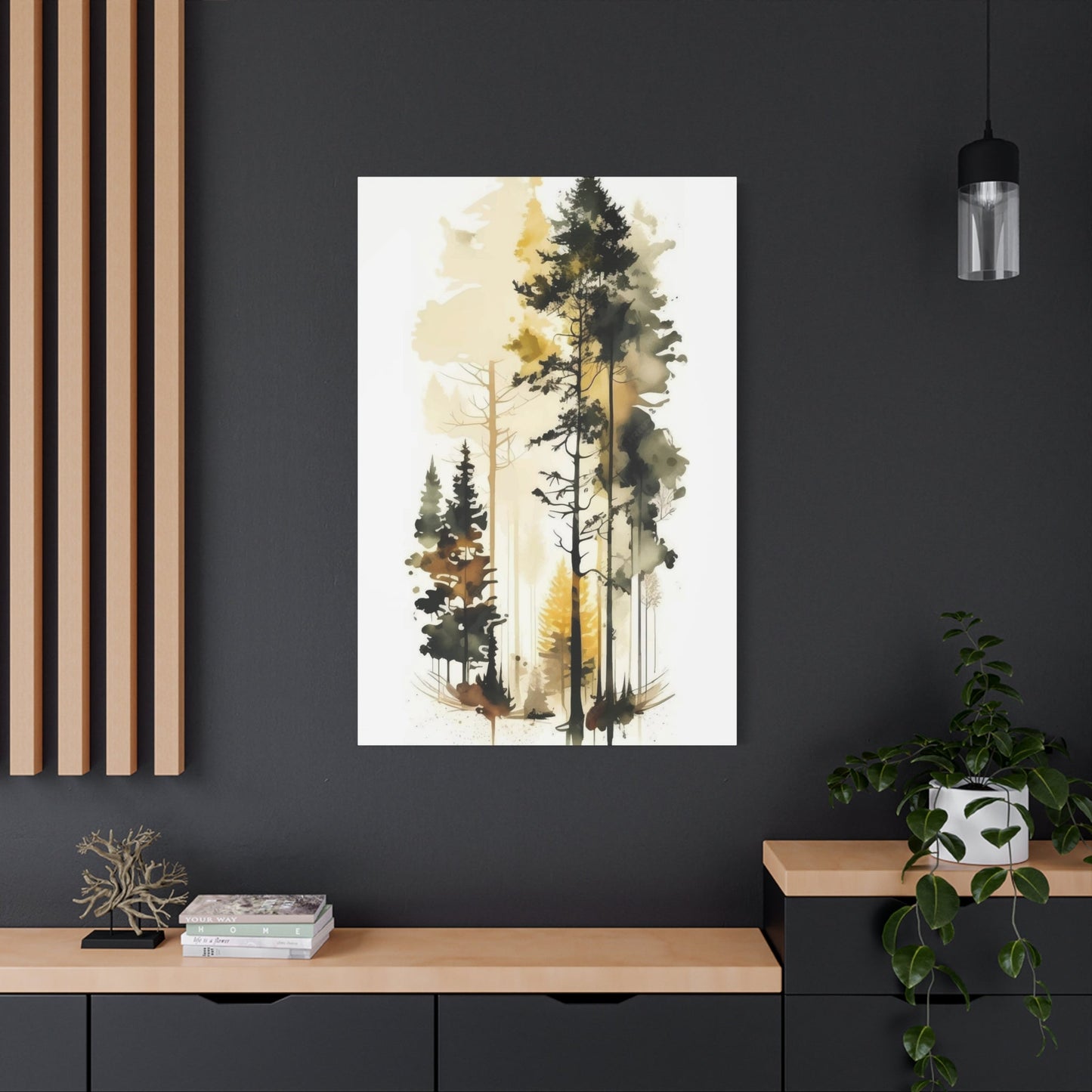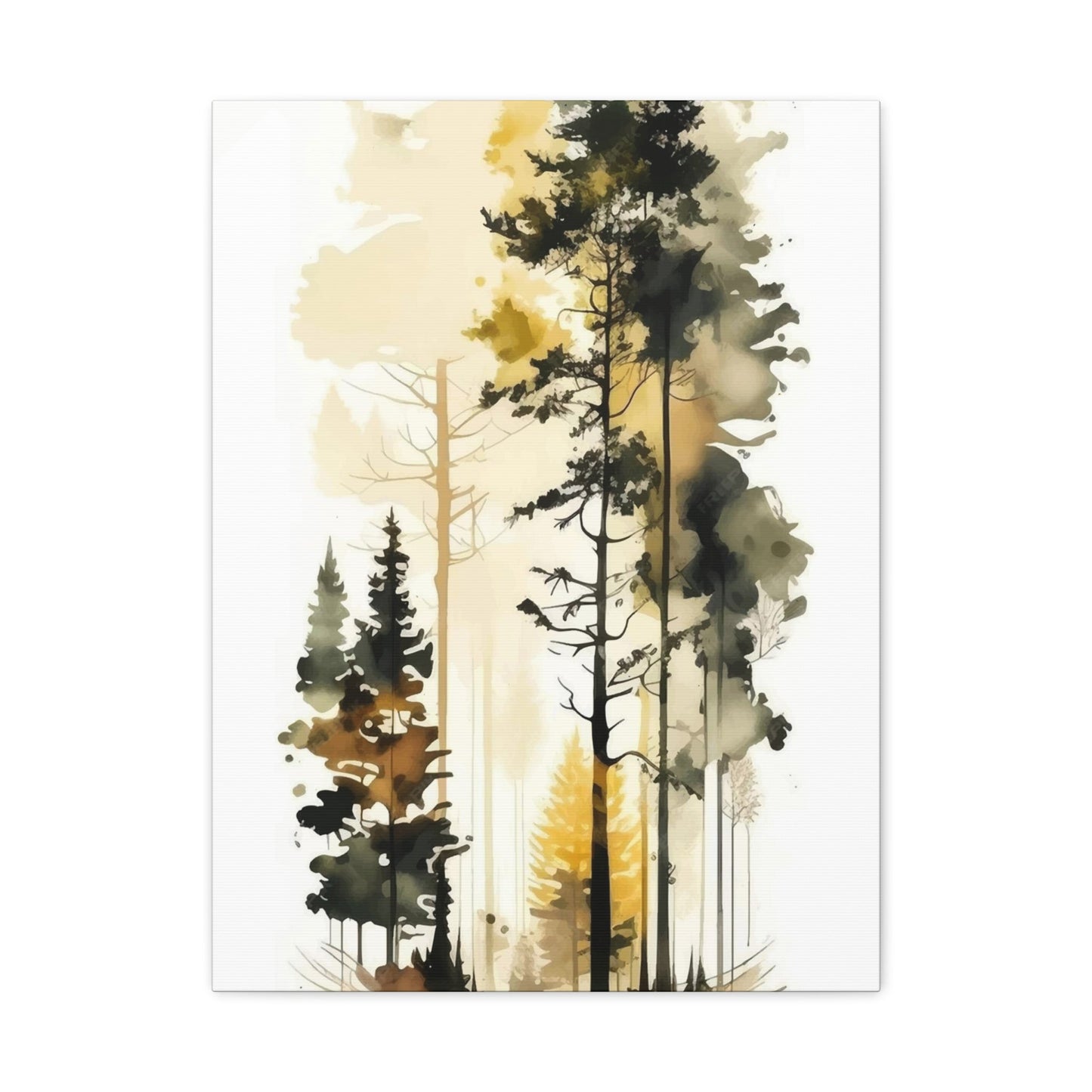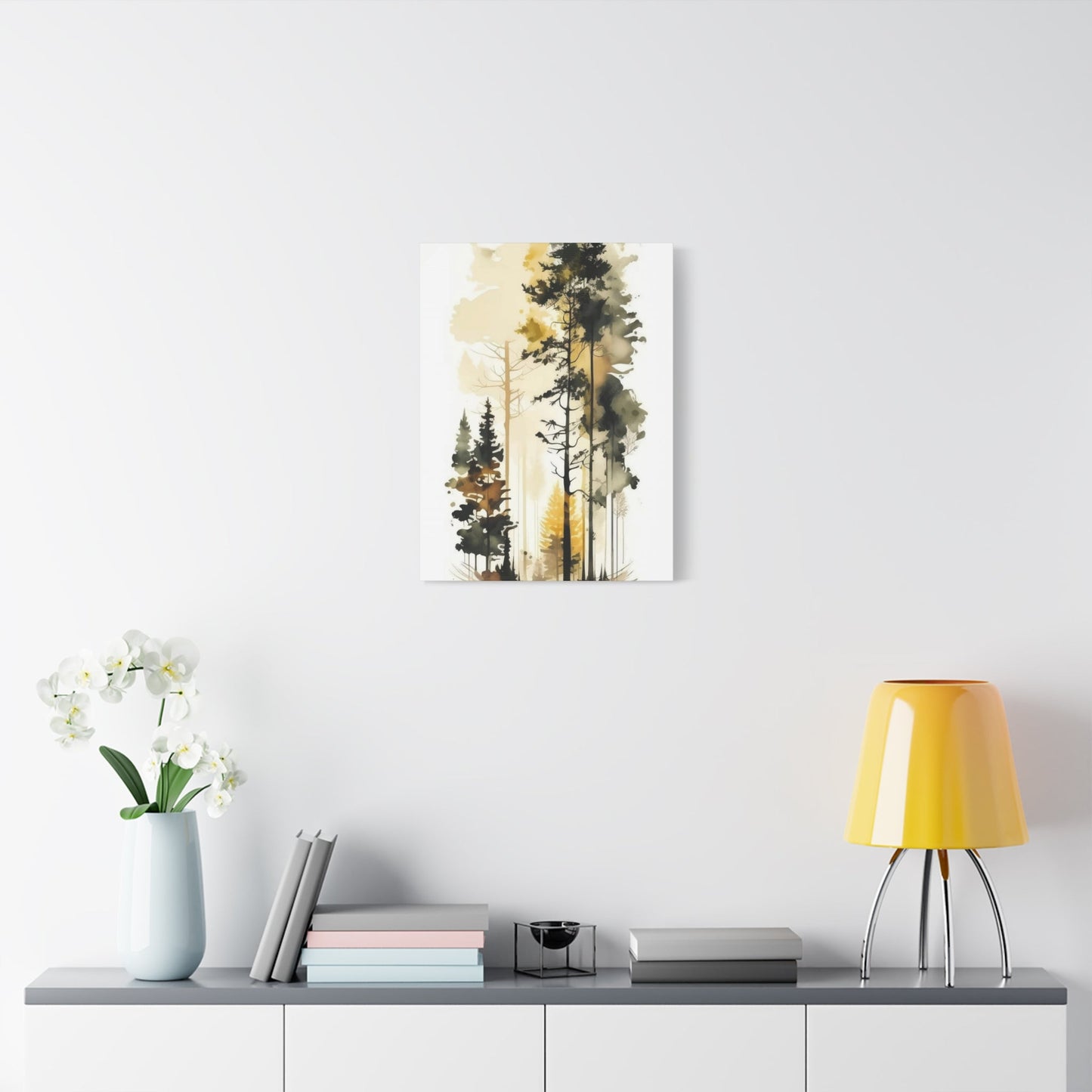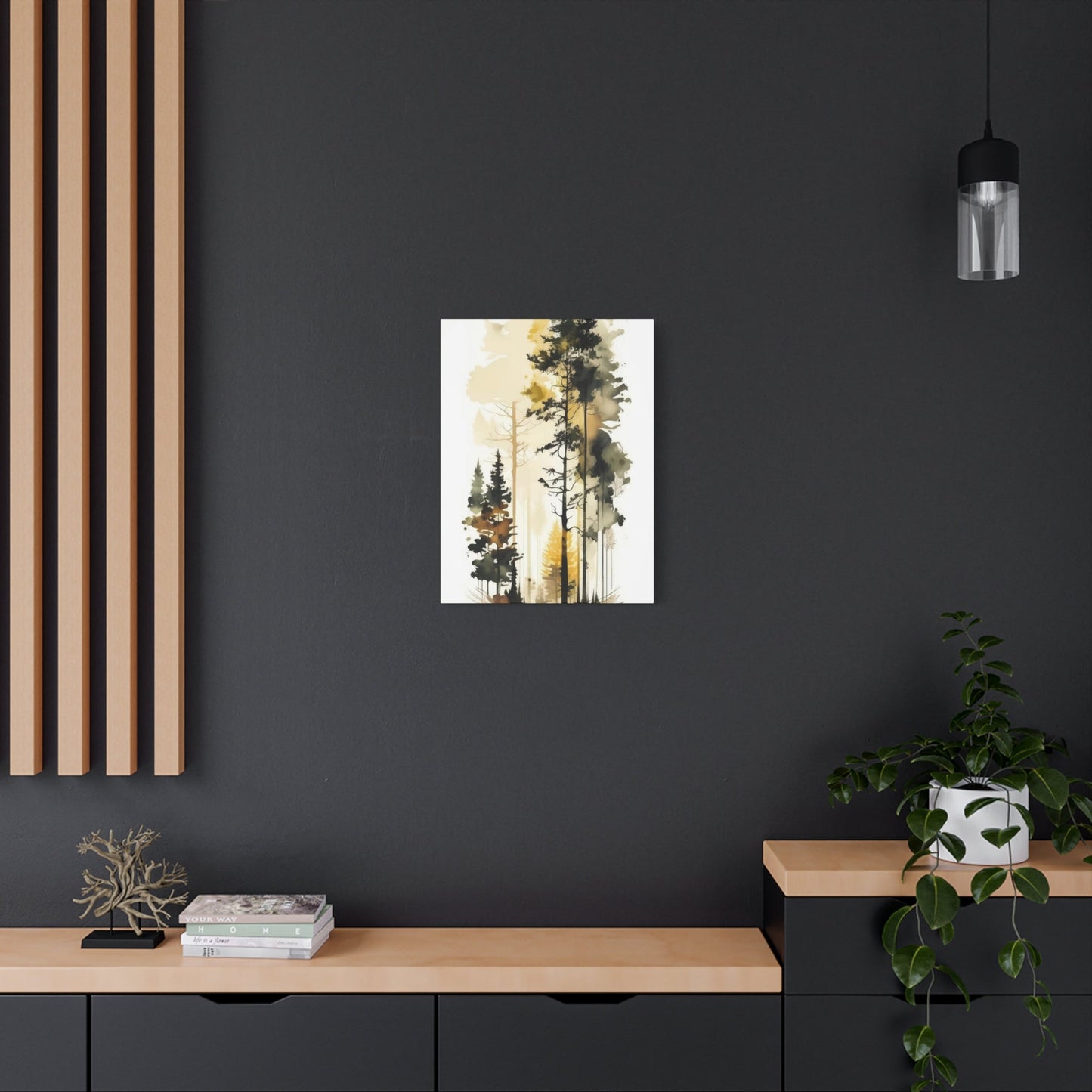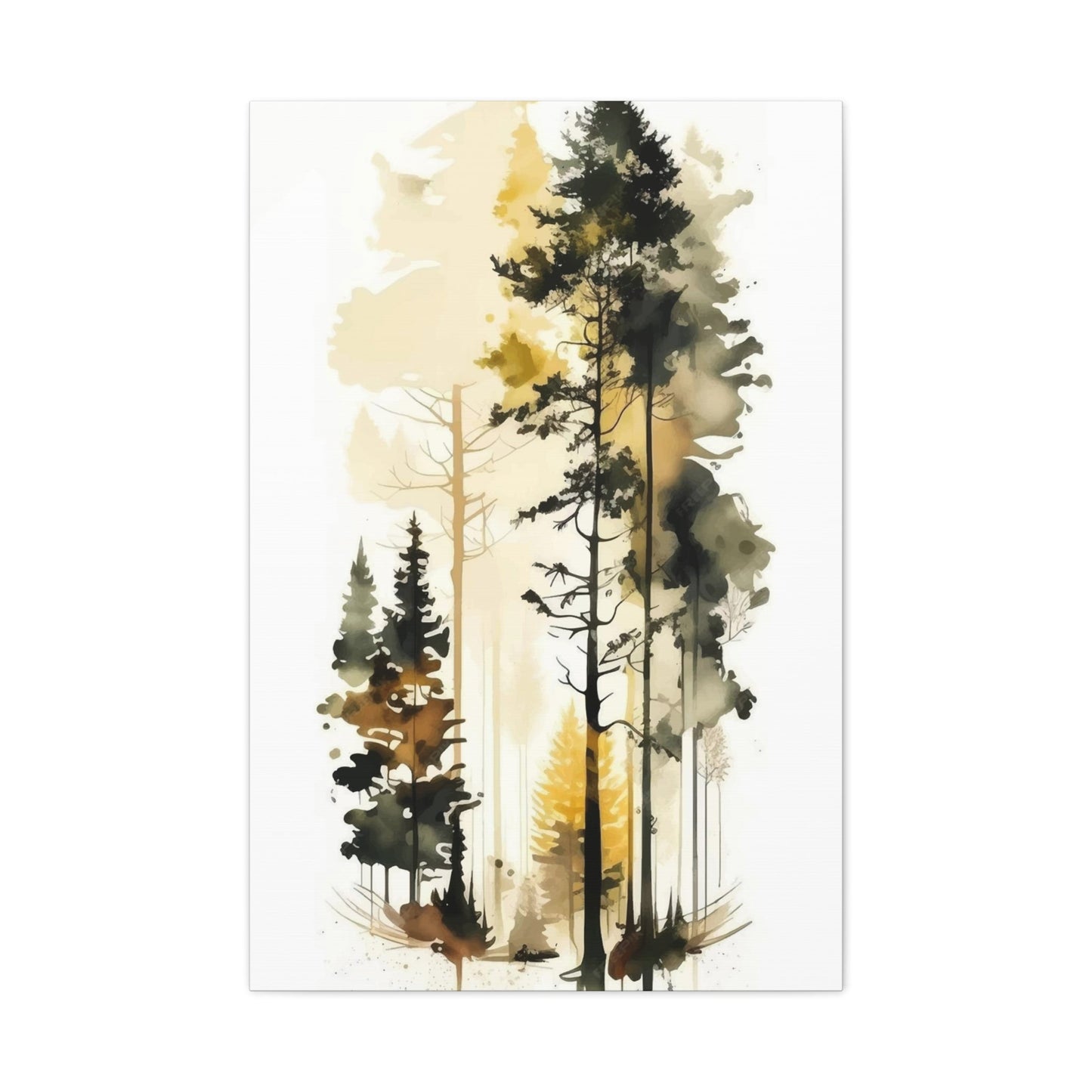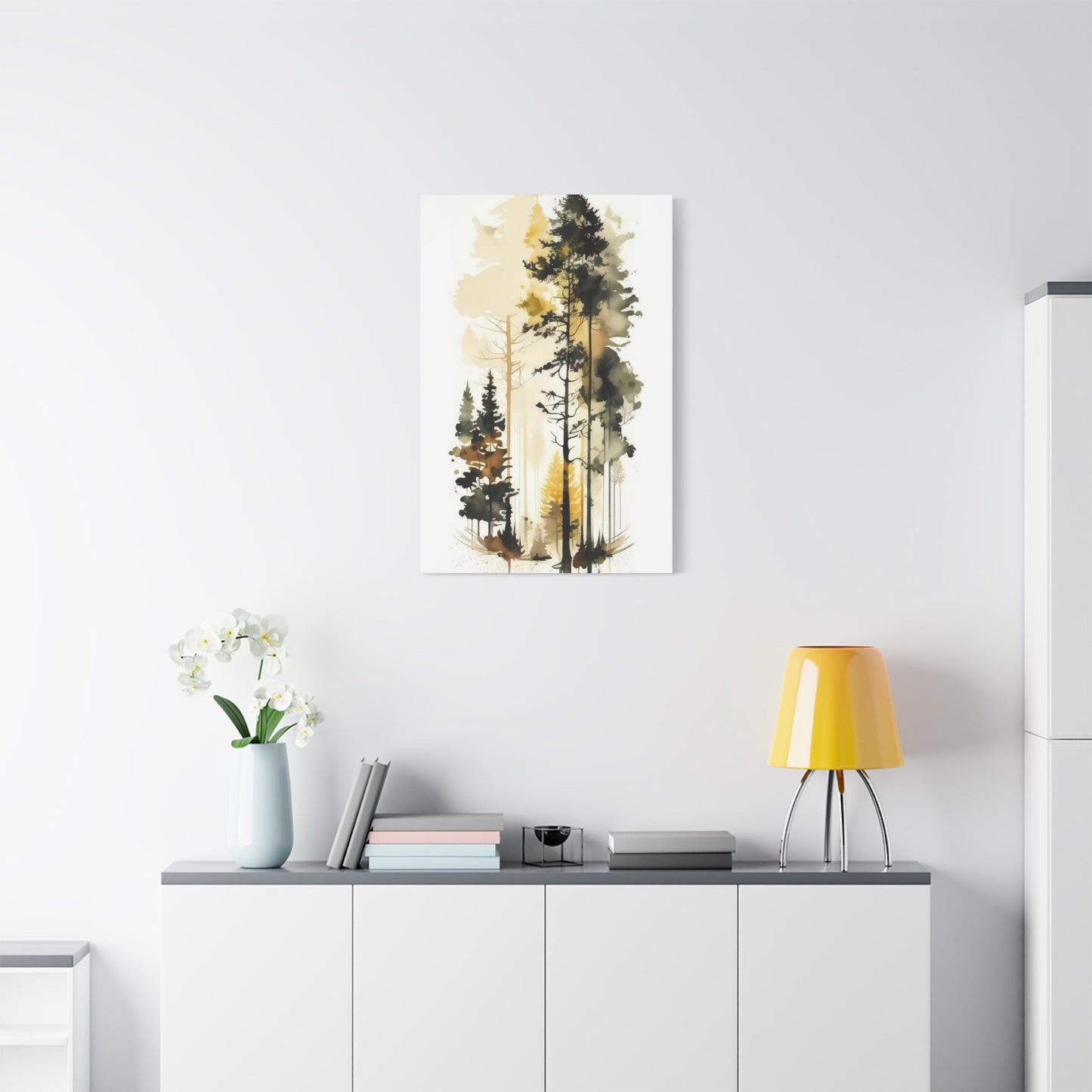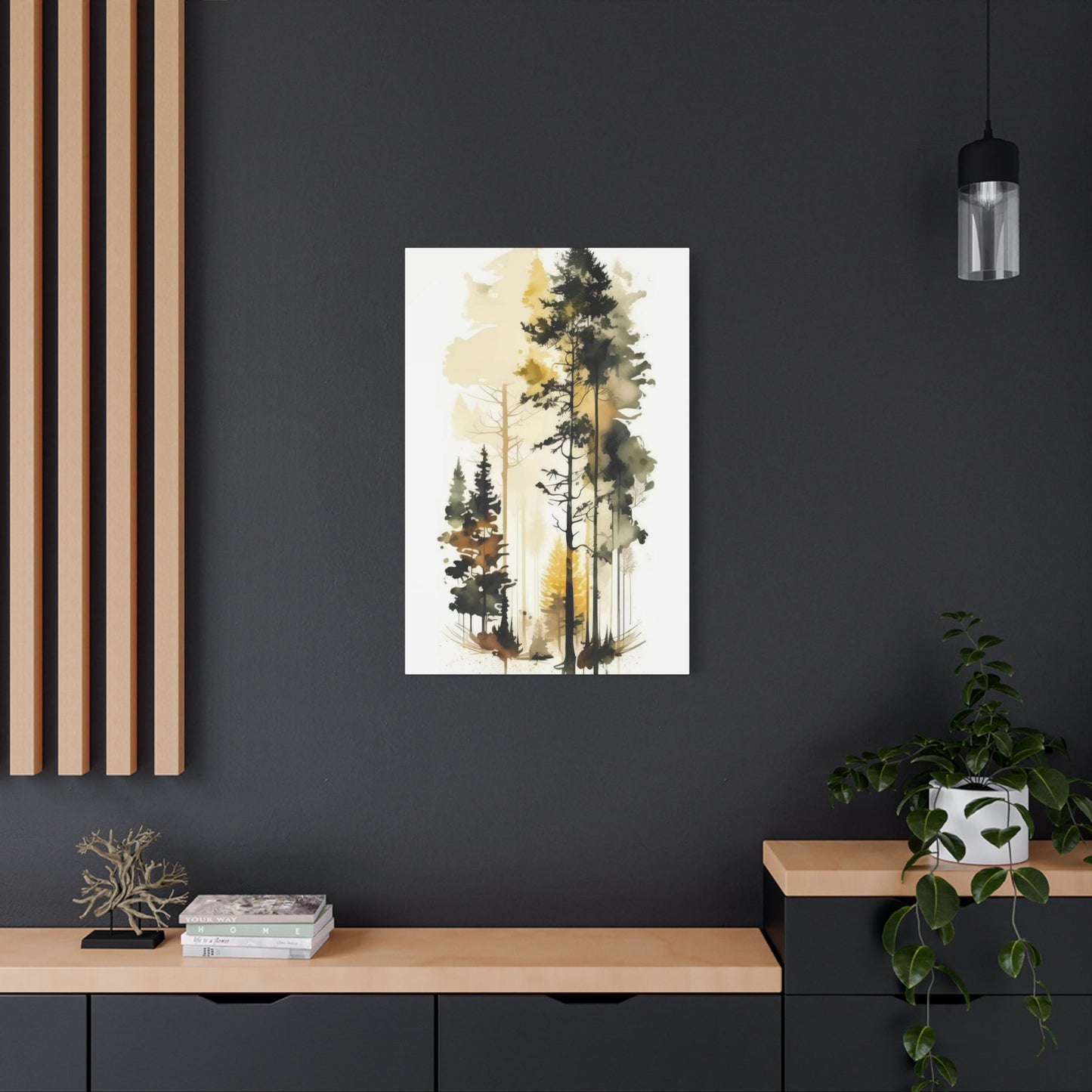Bringing Nature’s Beauty Into Your Living Space with Artistic Tree Wall Art Displays
The incorporation of botanical imagery into interior design has become increasingly popular among homeowners seeking to create serene, nature-connected environments. When you choose to display artistic representations of trees within your home, you're not simply hanging decoration on your walls; you're inviting the essence of the outdoors into your daily life. These botanical artworks serve multiple purposes, from establishing focal points in rooms to promoting feelings of tranquility and connection to the natural world. Whether your design preferences lean toward contemporary minimalism, rustic farmhouse aesthetics, or eclectic bohemian styles, there exists a perfect arboreal artwork waiting to enhance your space.
Interior designers and homeowners alike have discovered that botanical wall decorations offer versatility unmatched by many other decorative elements. These pieces work beautifully across various room types, from intimate bedrooms requiring peaceful atmospheres to dynamic living areas needing visual interest. The psychological benefits of incorporating natural elements into indoor spaces have been well documented, with studies showing that even representations of nature can reduce stress levels and improve overall wellbeing. Trees specifically carry symbolic weight across cultures, representing growth, strength, interconnectedness, and the passage of time.
When selecting arboreal artwork for your space, consider factors beyond simple aesthetic appeal. Think about the mood you want to establish in each room, the existing color palette and design elements, and how different artistic styles might complement or contrast with your furnishings. The scale of the artwork matters tremendously as well; a small print might disappear on a large wall, while an oversized piece could overwhelm a cozy nook. Lighting plays a crucial role too, as natural light can dramatically alter how colors and textures appear throughout the day. Taking time to thoughtfully select and place your botanical artwork will ensure it becomes a cherished element of your home rather than just another decoration.
Incorporating Botanical Imagery to Create Natural Interior Environments
The desire to blur the boundaries between indoor and outdoor spaces has driven many design trends over recent decades. Bringing representations of trees into your home serves as one of the most effective methods for achieving this connection. Unlike living plants that require ongoing care and specific environmental conditions, artistic depictions of trees offer the visual benefits of nature without the maintenance demands. They provide year-round beauty that doesn't depend on watering schedules, sunlight availability, or seasonal changes unless you specifically choose seasonal artwork.
Selecting the right botanical imagery requires understanding your personal connection to nature and what aspects of the outdoors resonate most deeply with you. Some people find peace in the stark beauty of winter branches against snow, while others prefer the lush fullness of summer canopies or the fiery colors of autumn foliage. Your choice of tree imagery can reflect memories of meaningful places, evoke desired emotions, or simply provide visual interest that complements your existing decor. Consider whether you want realistic photographic representations, stylized artistic interpretations, or abstract designs that suggest rather than directly depict arboreal forms.
The placement of nature-inspired artwork significantly impacts its effectiveness in transforming your space. Positioning a piece at eye level in a frequently used area ensures regular visual contact, maximizing the calming benefits associated with nature imagery. Creating unexpected moments of natural beauty by placing botanical art in transitional spaces like hallways or entryways can turn mundane areas into pleasant experiences. Grouping multiple pieces together creates gallery-style displays that make powerful statements, while singular large-scale works serve as commanding focal points that anchor entire rooms.
Color selection within your chosen artwork plays a vital role in establishing room ambiance. Earth tones like browns, greens, and tans create grounding, stable feelings that work particularly well in spaces meant for relaxation or focus. Brighter seasonal colors inject energy and vibrancy, making them ideal for social spaces or areas needing revitalization. Monochromatic pieces offer sophisticated elegance that adapts to various design schemes, while multi-colored works bring complexity and visual richness that rewards sustained viewing. Understanding color psychology helps you select pieces that support the emotional atmosphere you want to cultivate in each space.
Texture adds another dimension to botanical wall displays, moving beyond flat imagery to create tactile interest. Even when texture is purely visual rather than physical, it contributes depth and complexity to your walls. Smooth, polished presentations suit modern aesthetics, while rougher, more organic textures complement rustic or natural design approaches. The interplay between the texture of your wall covering, the artwork's surface, and surrounding furnishings creates layered visual interest that prevents spaces from feeling flat or one-dimensional. Considering these textural relationships during selection ensures cohesive integration of your botanical artwork into the broader design context.
Selecting Serene Botanical Prints for Peaceful Room Atmospheres
Creating spaces that promote relaxation and mental clarity has become increasingly important in our fast-paced world. The imagery you surround yourself with directly impacts your psychological state, making the selection of calming artwork a practical consideration rather than purely aesthetic one. Botanical prints depicting trees offer particularly effective tools for establishing peaceful environments, as the human brain has evolved to respond positively to natural imagery. Research in environmental psychology consistently demonstrates that views of nature, even through artwork, can lower blood pressure, reduce cortisol levels, and promote faster recovery from stress.
When specifically seeking prints that maximize calming effects, certain characteristics prove more effective than others. Symmetrical compositions create visual balance that the brain processes as orderly and reassuring. Gentle curves and organic shapes feel more relaxing than sharp angles or chaotic arrangements. Soft, muted color palettes with blues, greens, and earth tones trigger associations with restful natural environments like forests and meadows. Images suggesting depth and distance activate psychological responses associated with open, safe spaces where our ancestors could survey their surroundings. Trees with full canopies create sheltering impressions that unconsciously signal protection and security.
The style of artistic rendering influences calming potential as well. Highly detailed realistic images can engage the mind actively, making them better suited for spaces requiring focus rather than relaxation. Softer, more impressionistic approaches allow the eye to rest without demanding detailed examination. Watercolor techniques with their inherent fluidity and soft edges create particularly soothing visual experiences. Images capturing trees in fog or mist add atmospheric quality that enhances peaceful feelings. Seasonal choices matter too, with spring blossoms suggesting renewal, summer greenery offering vitality, autumn colors providing warmth, and winter scenes creating contemplative quietness.
Scale and proportion affect how calming a piece feels in your space. Oversized dramatic pieces can energize rather than relax, while appropriately sized works integrate smoothly into the visual field without overwhelming. Multiple smaller prints arranged harmoniously often create more peaceful feelings than single large statements. The relationship between the artwork's size and the wall space available should feel balanced, neither cramped nor lost. Adequate breathing room around pieces prevents visual clutter that counteracts calming intentions. Consider how you'll view the artwork in practice; pieces meant for bedrooms should look peaceful from both standing and lying positions.
Framing choices contribute to the overall calming effect of your botanical prints. Simple, understated frames in natural wood tones or soft whites maintain focus on the peaceful imagery rather than drawing attention to themselves. Mats in neutral colors provide visual separation between the artwork and frame, creating breathing space that enhances serenity. Glass versus acrylic glazing affects how light interacts with the piece; anti-reflective options prevent distracting glare that disrupts the calming experience. The weight and presence of the frame should match the artwork's energy level, with delicate pieces requiring subtle framing and more substantial images tolerating bolder presentation.
Lighting represents a frequently overlooked element in maximizing the calming potential of botanical prints. Natural daylight allows colors to appear as intended and connects indoor spaces to outdoor light cycles, reinforcing natural rhythms. When artificial lighting is necessary, warm color temperatures feel more relaxing than cool whites. Avoiding direct spotlights that create glare or harsh shadows maintains the peaceful atmosphere. Indirect ambient lighting that gently illuminates artwork without dramatic contrast proves most effective for calming spaces. Dimmer switches allow adjustment throughout the day, supporting different activities and moods while maintaining the artwork's serene contribution to the environment.
Metal Sculptural Elements Creating Dimensional Tree Displays
Moving beyond two-dimensional prints, metal sculptures offer distinctive approaches to incorporating tree imagery into interior spaces. These three-dimensional pieces interact with light and shadow in ways flat artwork cannot, creating dynamic visual experiences that change throughout the day as light angles shift. Metal's inherent properties of strength and permanence align symbolically with trees themselves, making it particularly appropriate for arboreal representations. The craftsmanship involved in creating metal sculptures adds layers of appreciation beyond the subject matter itself, as viewers can admire both the artistic vision and the technical skill required for execution.
Various metals offer different aesthetic possibilities for tree sculptures. Steel provides industrial strength and can be finished in numerous ways, from raw rusted surfaces suggesting age and weathering to polished mirror-like finishes reflecting surrounding environments. Copper develops beautiful patinas over time, starting bright and gradually aging to rich greens and browns that echo natural oxidation processes. Aluminum offers lightweight durability with silvery tones that read as contemporary and clean. Bronze carries traditional fine art associations and develops its own distinctive patina, creating heirloom-quality pieces that improve with age. Each metal brings unique visual character and practical considerations regarding weight, maintenance, and longevity.
The construction techniques used in metal tree sculptures significantly impact their visual effect. Welded designs can create bold, graphic silhouettes with strong presence and modern sensibility. Forged pieces carry handcrafted character with hammer marks and organic irregularities that reference traditional metalworking methods. Cut metal creates intricate details and delicate appearances despite the inherent strength of the material. Some artists incorporate multiple metals or combine metal with other materials like wood or stone, creating mixed-media works with additional visual complexity. The finish applied to the metal surface affects everything from perceived temperature to reflectivity, allowing artists to fine-tune the emotional impact of their work.
Scale considerations become particularly important with metal sculptures due to their three-dimensionality and weight. Small tabletop pieces provide intimate nature connections in personal spaces like desks or bedside tables. Medium-sized wall-mounted sculptures create focal points without overwhelming, working well in most residential spaces. Large-scale floor-standing or wall-mounted pieces make dramatic architectural statements suitable for rooms with generous proportions and ceiling heights. The physical weight of metal sculptures requires proper mounting hardware and wall support, especially for larger pieces, making professional installation advisable in many cases. Planning for these practical requirements during selection prevents disappointment when installation time arrives.
The interplay between positive and negative space defines much of a metal tree sculpture's impact. Open, airy designs with significant empty areas feel lighter and more delicate despite being constructed from heavy material. These work particularly well in minimalist or contemporary settings where they add organic interest without visual heaviness. More solid, filled-in sculptures create stronger presence and work effectively as statement pieces or in rooms with existing busy visual elements that might overwhelm delicate designs. Some sculptures use negative space strategically to frame views or create interesting shadow patterns, adding another layer of visual interest beyond the sculpture itself.
Color treatments on metal sculptures range from natural metal tones to painted or powder-coated finishes in virtually any hue. Natural finishes celebrate the material itself and typically age gracefully, developing character over time. Black finishes create strong contrast against light walls and offer sophisticated elegance that works across various design styles. White or light-colored finishes provide softness and work particularly well in bright, airy spaces. Rich colors like deep blues, forest greens, or warm rusts can coordinate with specific color schemes or create intentional color accents. The decision between preserving natural metal character and adding color depends on both design goals and personal aesthetic preferences.
Silhouetted Tree Forms for Streamlined Contemporary Walls
Minimalist design philosophy prioritizes simplicity, functionality, and intentional use of limited elements to create impactful spaces. Within this aesthetic framework, tree silhouettes offer particularly effective decorative options. By reducing arboreal forms to their essential outlines, silhouette artwork provides visual interest and natural connection without the complexity that might overwhelm minimalist spaces. The graphic quality of silhouettes creates strong contrast and clear shapes that read instantly, making them effective even from distance or in peripheral vision. This clarity aligns perfectly with minimalist principles valuing immediate comprehension over layered complexity.
The creation of successful tree silhouettes requires careful consideration of which details to retain and which to eliminate. The overall shape and gesture of the tree must remain recognizable and expressive even when reduced to flat outline. Characteristic branch patterns that distinguish one species from another can survive silhouette treatment, allowing knowledgeable viewers to identify specific tree types. The relationship between trunk, branches, and negative space creates the visual rhythm and movement that prevent silhouettes from feeling static or dull. Artists and designers creating silhouette work make hundreds of decisions about which small branches to include, which to merge, and which to omit entirely, shaping the final piece's energy and appeal.
Color choices in silhouette work typically involve stark contrasts that reinforce the graphic nature of the form. Classic black silhouettes on white backgrounds create maximum contrast and timeless sophistication. White silhouettes on black or dark backgrounds offer drama and work particularly well in rooms with darker color schemes. Some contemporary approaches introduce limited color, perhaps showing silhouettes in single accent colors against neutral backgrounds. Gradients from dark to light within the silhouette add subtle depth while maintaining overall simplicity. Metallic silhouettes in gold, silver, or copper catch light and add luxury while preserving the clean outline essential to the form.
Scale plays a crucial role in how effectively tree silhouettes work within minimalist spaces. Large single silhouettes create powerful focal points with minimal visual complexity, making them ideal for feature walls in living areas or bedrooms. Series of smaller silhouettes arranged in careful compositions can trace seasonal changes or show different tree species without overwhelming the space. The proportional relationship between the silhouette and its surrounding space matters tremendously; too small and the impact diminishes, too large and it can feel oppressive rather than elegant. Adequate negative space around silhouettes allows them to breathe and maintains the uncluttered feeling essential to minimalist success.
Material choices for silhouette artwork range from traditional framed prints to more innovative options. Paper cuts create delicate, detailed silhouettes with traditional craftsmanship appeal. Vinyl decals offer flexible, removable options for renters or those who like to change their decor frequently. Metal cutouts provide three-dimensional depth while maintaining the graphic silhouette quality. Projected or painted silhouettes eliminate framing entirely, integrating directly into wall surfaces. Each material option brings different practical considerations regarding installation, durability, and visual effect, allowing selection based on specific needs and preferences.
The styling of spaces featuring tree silhouettes should maintain the restraint and intentionality that defines minimalist design. Avoiding cluttered arrangements or excessive additional decoration allows the silhouette work to make its statement without competition. Coordinating other room elements in complementary neutral tones creates harmonious environments where the silhouette artwork can shine. Strategic lighting that casts interesting shadows or highlights the artwork adds dimension without requiring additional objects. The goal is creating rooms where every element, including the tree silhouettes, feels purposeful and considered rather than arbitrary or excessive. When executed successfully, this approach results in serene, visually powerful spaces that demonstrate minimalism's ability to create impact through reduction rather than addition.
Expansive Canvas Prints Making Bold Decorative Statements
Large-scale artwork commands attention and transforms spaces in ways smaller pieces cannot achieve. When working with substantial wall areas or rooms with high ceilings, oversized canvas prints depicting trees create the visual weight necessary to properly fill and balance the space. These statement pieces become the starting point around which other design decisions orbit, establishing color palettes, setting mood, and defining the character of entire rooms. The investment in a significant canvas print pays dividends in the instant transformation it provides, often eliminating the need for multiple smaller pieces and the challenge of arranging them effectively.
The technical aspects of large canvas printing have advanced considerably, now allowing reproduction of artwork and photographs at sizes previously impossible without visible quality degradation. Modern printing technologies deliver sharp detail and accurate color even when images span many feet in either direction. Canvas as a substrate offers particular advantages for large-scale work; unlike paper, it doesn't require glazing, eliminating weight and reflective glare issues. The texture of canvas adds subtle visual interest and provides a traditional fine art presentation that elevates even photographic images. Gallery-wrapped canvases where the image continues around the sides of the stretcher bars eliminate framing needs entirely, creating contemporary presentations perfect for modern interiors.
Subject selection for statement-sized tree canvases requires careful thought. Simple, bold compositions typically work better at large scale than intricate, busy designs that might overwhelm when expanded. A single majestic tree with strong form and character can fill substantial space while maintaining visual clarity. Panoramic forest scenes create immersive experiences, making viewers feel surrounded by nature. Close-up bark textures or leaf patterns take on almost abstract qualities when printed large, offering unexpected perspectives on familiar subjects. Dramatic lighting conditions such as backlit trees, sunrise/sunset silhouettes, or fog-shrouded forests gain additional impact when presented at impressive scales.
The practical considerations of displaying large canvas prints include both installation and spatial planning. Heavy large canvases require proper mounting hardware, typically heavy-duty wall anchors that penetrate studs rather than relying on drywall alone. Professional installation often makes sense for particularly large or valuable pieces. The viewing distance in the room must accommodate the scale; a massive print requires sufficient space for viewers to step back and take in the entire image comfortably. Furniture placement should complement rather than obstruct the artwork, and lighting must be planned to illuminate the piece effectively without creating glare or uneven illumination across the surface.
Color relationships between large canvas prints and surrounding environments deserve careful attention. Because statement pieces occupy significant visual territory, their color palettes heavily influence the room's overall feeling. Coordinating furniture, paint colors, and accessories with the canvas's dominant hues creates cohesive, intentional-looking spaces. Alternatively, creating contrast between the artwork and surroundings can make the piece pop even more dramatically. Neutral backgrounds allow colorful canvases to shine, while neutral canvases can calm rooms with bold furnishings or busy patterns. Understanding how the canvas print's colors will interact with existing elements prevents disappointing clashes and ensures successful integration.
The long-term impact of living with large-scale tree canvas art deserves consideration during selection. Unlike smaller pieces easily rotated or replaced, statement canvases typically occupy their spaces for years or even decades. Choosing images with personal meaning and timeless appeal rather than trendy subjects increases satisfaction over time. Quality materials and printing ensure the artwork maintains its appearance through years of display. Some people find looking at the same large image daily becomes meditative and deepening, while others might eventually crave change. Understanding your own relationship with consistency versus variety helps determine whether investing in major statement pieces aligns with your design approach and personality.
Depicting Seasonal Transformations from Spring Through Winter
The dramatic changes trees undergo through the seasons offer rich artistic possibilities and diverse aesthetic options for interior spaces. Unlike evergreens that maintain consistent appearance year-round, deciduous trees create entirely different visual experiences as they progress through spring growth, summer fullness, autumn color, and winter dormancy. Artwork capturing these seasonal variations allows homeowners to celebrate particular times of year they find most beautiful, create rotating displays that change with actual seasons, or maintain consistent year-round reminders of favorite seasonal moments.
Spring tree imagery carries associations with renewal, hope, and fresh beginnings. Early spring scenes showing buds just breaking or delicate new leaves unfurling capture the tentative awakening after winter's dormancy. Cherry blossoms, apple blossoms, and other flowering trees create spectacular if brief shows that many people consider the year's most beautiful moments. The pale greens of new growth offer soft, gentle color palettes perfect for creating fresh, optimistic atmospheres. Light levels in spring scenes often feel clean and bright as the sun gains strength but trees haven't yet developed the dense canopies that shade summer light. These qualities make spring tree art particularly appropriate for spaces dedicated to new projects, creative work, or areas meant to feel energizing and forward-looking.
Summer tree artwork emphasizes lushness, abundance, and vitality. Full canopies create dense layers of green that convey the season's peak growth and energy. The interplay of light and shadow through leafy branches creates complex, dappled patterns that add visual interest and movement. Deep, saturated greens suggest the richness of life at its fullest expression. Summer scenes often include complementary elements like blue skies, meadow flowers, or sun-drenched clearings that reinforce the season's warmth and openness. This imagery works well in spaces meant for relaxation, social gathering, or anywhere residents want to maintain connection to summer's leisurely atmosphere even during colder months.
Autumn tree imagery provides arguably the most dramatic color possibilities. The transformation of leaves into gold, orange, red, and purple creates natural color combinations that artists and decorators have celebrated for centuries. The richness and warmth of fall colors create cozy, welcoming feelings particularly appropriate for gathering spaces and rooms used primarily during cooler months. Harvest associations connect autumn trees to themes of fruition, completion, and preparation for winter's rest. The poignant beauty of fall foliage, brilliant precisely because it signals the tree's preparation for dormancy, adds layers of meaning about transience and the value of beauty even in endings. These emotional resonances make autumn tree art popular for contemplative spaces and areas where depth of feeling is welcomed.
Winter tree imagery embraces minimalism and stark beauty. Bare branches create intricate silhouettes against sky or snow, revealing the tree's underlying structure usually hidden by leaves. The simplified forms and limited color palettes of winter scenes align naturally with contemporary and minimalist design approaches. Snow-covered branches add elegance and quiet beauty, while ice-coated trees create glittering, almost magical effects. The dormant season carries associations with rest, introspection, and the quiet gathering of strength for spring's renewal. Winter tree scenes can create calm, meditative atmospheres particularly effective in bedrooms or personal retreats. The reduction to essentials that winter reveals can remind viewers of underlying truths and enduring structures beneath surface complexities.
Creating seasonal rotations of tree artwork allows your spaces to evolve throughout the year, maintaining visual interest and connection to natural cycles. This approach requires planning and storage but rewards with constantly refreshed environments that never feel stale. Some people coordinate their seasonal art changes with other traditional rituals like holiday decorating or spring cleaning, making the transition part of larger life patterns. Others prefer keeping consistent artwork year-round but choose pieces that capture their favorite season, creating personal sanctuaries that maintain optimal aesthetic and emotional conditions regardless of weather outside. Either approach works effectively when executed with intention and attention to how the artwork functions within the broader design context.
Watercolor Techniques Creating Gentle Interior Atmospheres
The aqueous transparency and soft edges characteristic of watercolor painting create particularly gentle, approachable artwork well-suited to spaces prioritizing comfort and calm. Unlike the sharp definition of photography or the potential intensity of oil painting, watercolor's inherent qualities produce images that feel lighter and less demanding of viewer attention. The medium's unpredictability and its tendency toward subtle color variations and fluid boundaries give watercolor tree paintings an organic, natural feeling that reinforces their botanical subject matter. These qualities make watercolor tree art especially effective in bedrooms, nurseries, reading nooks, and other areas where visual softness supports intended functions.
The technical characteristics of watercolor painting contribute to its gentle appearance. The white of the paper showing through transparent paint creates luminosity that feels fresh and airy. Color transitions in watercolor happen gradually through blending rather than abrupt edges, creating harmonious relationships throughout the composition. The medium's water-based nature means colors tend to mute and blend rather than remaining harsh or isolated. Happy accidents and unexpected color flows that occur during painting add character and spontaneity that prevent watercolors from feeling overworked or rigid. These technical features result in finished works that feel approachable and uncomplicated even when depicting complex subjects like full tree canopies.
Subject selection in watercolor tree paintings often emphasizes atmosphere and impression over precise botanical detail. Soft-focus treatments suggesting rather than defining individual leaves create dreamy, romantic effects. Trees rendered with loose, gestural brushwork convey essence and energy rather than exact likeness. Atmospheric effects like fog, mist, or rain feel particularly natural in watercolor, as the medium's fluid nature mimics weather conditions visually. Seasonal themes work beautifully in watercolor, with spring blossoms appearing delicate and ethereal, autumn colors glowing with backlit transparency, and winter scenes achieving crystalline clarity. The medium's versatility allows both realistic representation and abstract interpretation while maintaining its characteristic gentleness.
Color palettes in watercolor tree paintings typically feature the soft, slightly muted tones natural to the medium. Even when depicting vibrant subjects like autumn foliage, watercolors tend toward gentle rather than harsh intensity. Cool color harmonies in blues and greens create especially serene effects, while warm palettes in peaches, corals, and gentle yellows feel nurturing and embracing. Limited color schemes using only two or three hues create sophisticated, cohesive works with effortless coordination. The transparency of watercolor means even darker tones maintain luminosity rather than feeling heavy, allowing rich colors without overwhelming delicacy. These inherent color characteristics make watercolor tree paintings remarkably easy to integrate into existing color schemes.
Framing and presentation choices significantly impact how watercolor tree paintings function in interiors. Traditional matting in white or cream creates clean separation between artwork and frame, allowing the watercolor's delicacy to shine. Simple frames that don't compete for attention keep focus on the painting itself. Glass or acrylic glazing protects the artwork while allowing unobstructed viewing, with anti-reflective options particularly valuable for watercolors that can be overwhelmed by glare. The intimate scale at which many watercolorists work means these pieces often succeed in smaller formats that might not provide enough visual weight in other media. Groups of smaller watercolors can create charming gallery walls with cohesive gentle energy throughout.
Lighting considerations for watercolor tree paintings require attention to preservation needs alongside aesthetic goals. Watercolors are particularly vulnerable to light damage, with colors fading if exposed to strong direct sunlight over time. Placement away from windows or in areas receiving only indirect natural light protects the artwork's longevity. Artificial lighting should avoid heat-producing sources like halogen bulbs that could damage delicate works. Soft, diffused lighting that doesn't create glare on the glass suits both preservation and aesthetic goals, allowing the watercolor's subtle beauties to show without harsh highlighting. With proper care, watercolor tree paintings maintain their gentle beauty for generations, becoming increasingly valuable as handmade artwork in our digital age.
Abstract Tree Representations for Contemporary Living Spaces
Abstract art distills subjects to essential elements, emphasizing form, color, line, and composition over realistic representation. When applied to tree imagery, abstraction offers opportunities to celebrate arboreal qualities like growth patterns, branching structures, and organic movement without literal depiction. These interpretive approaches align naturally with modern design aesthetics valuing innovation, individual expression, and fresh perspectives. Abstract tree art allows those wanting natural connections without traditional landscape imagery to bring botanical themes into contemporary homes in ways that feel current and sophisticated rather than conventional.
The spectrum of abstraction in tree art ranges from semi-representational work where trees remain clearly identifiable to complete abstraction where only those informed by titles might recognize botanical inspiration. Simplified trees reduced to essential branching structures create geometric, almost architectural forms that bridge natural and designed worlds. Color-focused abstraction might use the palette of trees while abandoning representational form entirely, creating emotional responses through color relationships rooted in nature. Expressionist approaches emphasizing brushwork and gesture convey the energy and movement of trees without defining literal forms. Each level of abstraction offers different aesthetic possibilities and speaks to different viewer preferences.
Modern abstract artists employing tree themes often emphasize formal qualities that literal representation might obscure. The fractal nature of branching patterns where each division echoes larger structures becomes more apparent when reduced to essential lines. The rhythm created by repeated vertical trunks in a forest can be expressed through pattern and repetition freed from individual tree details. The contrast between organic curves and angular branches creates dynamic tension explored purely as formal relationships. Positive and negative space relationships gain prominence when removed from literal interpretation requirements. These formal explorations appeal to viewers who appreciate design principles and visual problem-solving as much as subject matter.
Color usage in abstract tree art often departs dramatically from naturalistic palettes, offering bold creative possibilities. Electric blues, vibrant magentas, or neon greens might replace expected browns and greens, creating energy and surprise. Monochromatic schemes in unexpected colors explore value and tone relationships while maintaining botanical gesture. Analogous color harmonies create sophisticated, coordinated works easy to integrate into designed spaces. Complementary colors create vibrant optical effects and visual excitement. This color freedom allows abstract tree art to coordinate with specific interior color schemes more flexibly than realistic work must, making it practical for design-focused homes where color coordination matters significantly.
The scale and presentation of abstract tree art requires consideration of visual impact and context. Bold abstraction often succeeds at large scale where its graphic qualities create powerful statements without overwhelming through excessive detail. Conversely, delicate abstract work might lose impact if displayed too large, with its subtleties becoming unclear. The surrounding environment influences appropriate abstraction levels; busy, eclectic spaces might benefit from simpler abstract forms, while minimalist rooms can showcase complex abstraction without visual competition. Framing choices range from sleek modern frames that emphasize the artwork's contemporary nature to frameless presentations that allow the work to integrate directly into wall spaces.
Natural Wood Elements Adding Organic Warmth to Walls
Wood as both subject and medium creates particularly resonant arboreal artwork where the material itself carries meaning related to the imagery. When trees are depicted using actual wood, whether as substrate, frame, or sculptural element, the connection between representation and represented object becomes tangible and direct. This material authenticity appeals to those valuing genuine natural materials over synthetic alternatives. Wood's inherent warmth, both visual and tactile, contributes to cozy, welcoming environments that feel grounded and comfortable. The variation in grain, color, and texture across different wood species ensures each piece possesses unique character impossible to replicate exactly.
Various techniques employ wood in creating tree-themed artwork. Relief carving removes background material to leave tree forms raised from the surface, creating dimensional pieces with play of light and shadow across carved surfaces. Inlay work combines different wood species to create images through color and grain contrasts, showcasing wood's natural palette. Pyrography or wood burning draws with controlled burning, creating images in tones from light tan to deep brown depending on burn intensity. Reclaimed wood assembled into tree shapes combines sculptural form with environmental consciousness and interesting weathered textures. Each technique highlights different aspects of wood's potential as artistic medium while creating distinct aesthetic results.
The species of wood chosen for tree artwork carries both practical and aesthetic implications. Light woods like pine, maple, or birch create bright, airy feelings and work well in Scandinavian or contemporary farmhouse aesthetics. Medium-toned woods like cherry or oak provide classic warmth and traditional appeal suitable for various design styles. Dark woods like walnut or mahogany create rich, sophisticated looks with dramatic presence. Exotic woods offer unusual grains and colors but raise sustainability questions requiring consideration. Bamboo, technically a grass but used similarly to wood, provides sustainable options with distinctive linear grain patterns. Understanding wood characteristics helps select pieces that align with both design goals and values regarding sustainability and sourcing.
The finish applied to wooden tree art significantly affects its appearance and maintenance requirements. Natural oil finishes enhance grain and color while maintaining wood's tactile quality and allowing future refinishing. Polyurethane and other film finishes provide durable protection but create more plastic appearance and feel. Matte finishes maintain wood's natural look while offering protection, whereas glossy finishes add shine that can read as more formal or traditional. Distressed finishes artificially age wood for vintage or rustic effects. Painted finishes allow color introduction while maintaining wood's texture, though they obscure natural grain. The appropriate finish depends on the piece's style, its location's environmental conditions, and maintenance preferences.
Monochromatic Photography Celebrating Tree Architecture
Black and white photography strips away color to emphasize form, texture, contrast, and composition. When applied to tree subjects, this reduction reveals structural beauty that color might obscure. The intricate architecture of branches becomes more apparent when not competing with seasonal color. Bark textures gain prominence, showing patterns and variations in pure tonal ranges. The play of light and shadow across three-dimensional forms creates dramatic effects that define shapes and suggest depth. This formal emphasis makes monochromatic tree photography particularly appealing to viewers who appreciate design elements and visual structure as much as or more than subject matter itself.
The aesthetic qualities of black and white photography carry specific associations and emotional tones. The medium suggests timelessness, as black and white imagery predates color photography historically and doesn't date itself through color trends or fading. There's an inherent seriousness and artistic intention in choosing black and white over easier color photography. The abstraction away from literal color representation creates slight distance that can feel more contemplative and less immediate than color imagery. These qualities make black and white tree photography feel sophisticated, thoughtful, and intentional, suitable for spaces wanting these atmospheric qualities.
Various types of tree subjects particularly succeed in black and white treatment. Ancient trees with gnarled trunks and twisted branches showcase character and age through texture and form. Winter trees with bare branches create intricate patterns against sky that become graphic and bold in monochrome. Trees photographed in fog or mist create atmospheric mystery with subtle tonal gradations. Backlit trees with sunlight streaming through branches create high-contrast drama perfect for black and white rendering. Close-up bark studies become almost abstract texture explorations. Each subject type offers different formal possibilities that black and white treatment emphasizes effectively.
The technical decisions in black and white tree photography significantly impact aesthetic results. Contrast levels determine whether images feel soft and gentle or bold and dramatic. High contrast creates strong blacks and bright whites with limited mid-tones, resulting in graphic, punchy images with modern sensibility. Low contrast emphasizes subtle tonal gradations creating softer, more romantic effects. The tonal range across the full spectrum from pure black to pure white provides richness and depth, while limited ranges create specific moods and effects. Grain or noise in the image can add texture and character or detract from smoothness depending on artistic intention. Understanding these technical variables helps evaluate and select black and white tree photography aligned with desired aesthetic outcomes.
Three-Dimensional Panel Systems Creating Textured Surfaces
Moving beyond flat wall treatments, three-dimensional panels create architectural interest through physical depth and shadow play. When designed with tree themes, these panels transform walls into textured surfaces that engage multiple senses beyond sight. The dimensional quality creates ever-changing appearances as light moves throughout the day, with shadows shifting and emphasizing different aspects of the design. This dynamic quality means the wall never looks exactly the same, providing ongoing visual interest that flat artwork cannot match. The substantial presence of dimensional panels makes them suitable for contemporary, upscale interiors seeking distinctive architectural details.
Materials used for three-dimensional tree panels vary widely, each offering different aesthetic qualities and practical characteristics. Wood panels carved with tree relief create warm, organic surfaces with natural material authenticity. Metal panels in aluminum, steel, or copper provide industrial or contemporary aesthetics with durability and minimal maintenance. Resin panels allow complex details and color possibilities with lighter weight than stone or wood. Plaster or gypsum creates traditional architectural detailing with paintable surfaces. Acoustic panels combining dimensional tree designs with sound-dampening properties serve dual functional and aesthetic purposes. Each material brings different installation requirements, maintenance needs, and design possibilities requiring evaluation against space requirements and preferences.
The design approaches for three-dimensional tree panels range from realistic representation to abstract interpretation. Realistic carving creates lifelike bark textures and branch details emerging from the wall surface. Geometric abstraction reduces tree forms to angular facets creating modern, crystalline effects. Organic flowing forms suggest growth and movement without literal depiction. Repetitive modular patterns create overall effects through accumulated similar elements. Some panels create positive relief where tree forms project forward, while others use negative relief where tree images are recessed into surfaces. The interplay between raised and recessed areas creates the shadow patterns that give dimensional work much of its visual impact.
The scale and installation of three-dimensional panels require careful planning. Full wall coverage creates immersive environments where the entire surface becomes textured art. Partial wall treatments create focal areas or accent walls while leaving other surfaces plain. The pattern repeat in modular systems must align properly across multiple panels for successful appearance. Installation typically requires professional assistance due to weight, alignment challenges, and proper mounting requirements. Wall preparation including reinforcement may be necessary for heavy panel systems. These practical considerations mean dimensional panel projects represent significant commitments requiring thorough planning before installation.
Styling Guidelines for Botanical Wall Displays
Successfully incorporating tree-themed artwork into your home requires more than simply purchasing attractive pieces. The placement, arrangement, and integration with other design elements determine whether artwork enhances spaces or feels randomly applied. Thoughtful styling transforms individual pieces into cohesive elements contributing to overall design success. This process involves considering sight lines, furniture relationships, color coordination, and the narrative or emotional arc you want to create throughout your home. Taking time for careful styling ensures your investment in artwork pays maximum aesthetic and emotional dividends.
The first consideration in styling tree artwork involves selecting appropriate locations based on viewing patterns and room function. High-traffic areas benefit from interesting artwork that rewards repeated viewing without demanding extended attention. Areas where people linger like seating areas or dining spaces can feature more complex work inviting sustained examination. Bedrooms typically benefit from calming imagery supporting relaxation, while home offices might include inspirational or energizing pieces. The viewing distance available affects appropriate scale; distant viewing requires larger or bolder work, while intimate spaces suit smaller, detailed pieces. Understanding how each space is used and experienced guides appropriate artwork selection and placement.
Height and placement decisions significantly impact artwork effectiveness. The general guideline suggests hanging centers approximately 57-60 inches from the floor, approximating average eye level. However, this rule requires adjustment based on furniture relationships and ceiling height. Artwork over sofas should hang 6-10 inches above the furniture with the piece's width being roughly two-thirds to three-quarters the sofa width. Over beds, artwork should relate to headboard width rather than full mattress width. In rooms with high ceilings, raising artwork higher than standard prevents it from feeling lost in lower portions of tall walls. These guidelines provide starting points requiring adjustment for specific situations.
Conclusion
In the heart of every home lies a desire for balance—between movement and stillness, light and shadow, structure and freedom. Artistic Tree Wall Art Displays embody that balance perfectly, blending the grace of nature with the sophistication of interior design. They do more than decorate a wall; they transform your living space into an atmosphere of renewal, harmony, and grounded beauty. Through each branch, leaf, and silhouette, these artworks remind us that nature is not something distant—it’s something we can invite in, live alongside, and draw peace from every day.
The presence of Tree Wall Art in your living space is both a visual and emotional transformation. Trees, timeless symbols of growth, strength, and life, breathe warmth into interiors while infusing them with a sense of calm. Their intricate forms and natural rhythms echo the world beyond our windows, creating a soothing dialogue between the organic and the architectural. Whether you choose vibrant forest scenes, minimalist outlines, or abstract interpretations rich in texture, each piece becomes a conduit of serenity—a silent reminder of life’s quiet persistence and beauty.
What makes Artistic Tree Wall Art particularly compelling is its ability to adapt to any style of décor. In modern settings, sleek black-and-white tree silhouettes can lend sophistication and depth. In rustic or bohemian homes, richly colored tree canopies or textured bark imagery can bring warmth and authenticity. Even minimalist spaces benefit from the balance a simple tree motif provides, anchoring clean lines with organic grace. When paired with natural materials like wood, rattan, linen, and stone, the art becomes part of a larger narrative—a story of living in harmony with the earth’s essence.
Beyond its visual appeal, Tree Wall Art cultivates emotional well-being within the home. Countless studies have shown that natural imagery helps reduce stress, improve mood, and promote focus. By integrating these artworks into your living room, hallway, or dining area, you create not only a more beautiful environment but also a restorative one. The energy of nature’s calm begins to flow through the space, softening edges, balancing emotions, and inviting everyone who enters to relax and breathe more deeply. It’s as if each image carries a whisper of the forest—a promise of peace and renewal.
There’s also an expressive quality in Artistic Tree Wall Art that allows it to reflect personal meaning. Some may see in it the strength of their roots and the beauty of endurance; others may connect with its symbolism of growth and transformation. Trees stand as silent witnesses to time—they grow, change, and adapt, yet remain steady. Bringing such imagery into your living space can act as a daily affirmation of resilience and renewal. Each piece of art becomes more than décor—it becomes a mirror of the life you’re building and the peace you seek within it.
From a design perspective, placement and presentation can dramatically enhance the emotional impact of Tree Wall Art. A large centerpiece over a sofa or console table can serve as a visual anchor, drawing the eye and setting the tone for the entire room. Alternatively, a gallery wall of smaller tree-themed pieces—each representing different seasons, moods, or styles—can tell a layered story of nature’s evolution. Soft, ambient lighting can further elevate the experience, highlighting textures and creating shadows that mimic sunlight filtering through branches, bringing the artwork to life.













